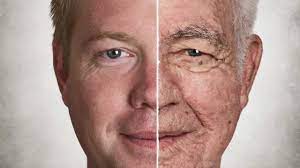What is acne?
Acne is a common skin condition. It is also known as 'acne vulgaris'. Acne affects teens and adults of all ages. It occurs when the hair follicles become clogged with sebum and dead skin cells. It is characterised by non-inflammatory: open or closed comedones and inflammatory: papule, pustules, nodules or cysts.
How does acne form?
Normally, the sebum produced will be travelled to the skin through the hair follicle. When the hair follicle is clogged by dead skin, it blocks the sebum. The combination of dead skin cells and excess sebum then provide a feast to the bacteria known as Propionibacterium acnes. This bacteria could be present as normal flora on the skin, however it can be overgrowth when the skin is being too oily. When there is chance for the bacteria to get into the hair follicle, it triggers inflammation and hence acne formation.
Factors that cause acne
1. Colonisation of skin bacteria
2. Hyperactivity of sebaceous glands
3. Increased shedding of keratinocyte
4. Release of inflammatory chemicals
Risk factors of acne
1. Hormones:
An increase in androgens may lead to acne formation. Androgens are male sex hormones but these normally will increase in both male and female during puberty.
Sebaceous glands are rich in androgen receptors, when the androgens hormones are increased, it induces more sebum production and hence clogging the hair follicles.
Medical condition with hormonal imbalance like polycystic ovarian syndrome may also cause acne.
Many women experience acne breakout during pregnancy especially during the first and second trimester due to the hormonal change.
2. Family history
Although there is no specific gene that indicates acne run hereditary, many studies show that those with parents who suffered from acne are more prone to have acne.
3. Medication
Certain medications such as hormonal pills, corticosteroid, Biotin (vitamin B7), Vitamin B12, anti-depressant like lithium and etc can cause acne.
4. Age
Adolescence or puberty are more likely to develop acne, as mentioned earlier it is due to the increased sebum production caused by androgen hormone.
However, some adult may still have acne due to the hormonal change and lifestyle.
5. Diet
Studies indicate that certain food like carbohydrate rich food/drinks and dairy products may worsen acne. However more research are needed to prove that.
Treatment and Management
The choice of treatment is based on severity of acne and patient's preference.
Most patients should be treated with combination of medication.
The goals of the treatment:
1. Resolution of acne
2. Reduction of psychological morbidity
3. Prevention of scar
It's divided into
1. Pharmacological treatment
2. Physical therapies
Pharmacological Treatment
1. Topical medication
I. Benzoyl peroxide
- It's an oxidising agent which has bactericidal, mild anti-inflammatory & Comedolytic properties
- Monotherapy for mild to moderate acne
- Start at lower concentration of 2.5%
- Gradually increase to 5-10% if no improvement
- apply once per day
II. Topical Retinoids
- It's synthetic derivatives of Vitamin A (Adapalene, Tretinoin etc)
- It helps to normalise follicular keratinisation and decrease keratinocyte cohesiveness and hence reduce occlusion and comedones formation
- It can cause photosensitivity and hence only able to use at night
- Use as monotherapy in non inflammatory acne (comedones)
- Use in combination in inflammatory acne
III. Antibiotics (Topical Clindamycin, Topical Erythromicin)
- Use in mild to moderate inflammatory acne
- Avoid monotherapy treatment as to prevent bacterial resistance
IV. Topical Azelaic Acid
- It's an Aliphatic dicarboxylic acid which has antimicorbial and anticomedonal properties.
- Also inhibits tyrosinase thus effective post-inflammatory hyperpigmentation
V. Topical Salicylic Acid
- O-hydroxybenzoic acid which has keratolytic and comedolytic effect
Systemic Treatment
I. Oral Antibiotic
- Oral antibiotic should be prescribed in combination with other topical treatment eg. Benzoyl Peroxide, retinoids etc to prevent the development of bacteria resistance as well to target multiple pathogenesis of acne
- The treatment duration should not exceed 3-4months with minimum duration of 6-8 weeks to see the clinical improvement
- Antibiotic commonly used are doxycycline, tetracycline or erythromycin
- Used in moderate to severe acne vulgaris
II. Oral Isotretinoin
- Isotretinoin is a retinoid and the cis configuration of tretinoin.
- It reduces sebum production by inhibiting the sebaceous gland activity.
- It also inhibits the follicular keratinisation by stimulating epidermal mitosis and hence prevent hair follicle from being clogged.
- Prescribed to nodulocystic or severe acne and treatment resistant moderate acne vulgars
- Its teratogenic, a female patient should be strictly counselled on contraception.
III. Oral Hormonal Therapy
- Benefits especially in those with hyperandrogenism
Physical Treatment
1. Intralesional Corticosteroid Injection
- Used in nodulocystic acne
2. Chemical Peels
- Used as an adjunct in treatment
- Preferred choice would be salicylic acid and glycolic peels
3. Energy- based devices
- Intense pulsed light (IPL): Destruction blood supply and reduces sebaceous glands hence reduction in sebum production
- Laser treatment: induce photocoagulation/ photothermal injury which help for bactericidal effect on C.acnes and reducing size of sebaceous gland
- Radiofrequency: delivers high energy to cause destruction of sebaceous glands via thermal injury










Comments
Post a Comment